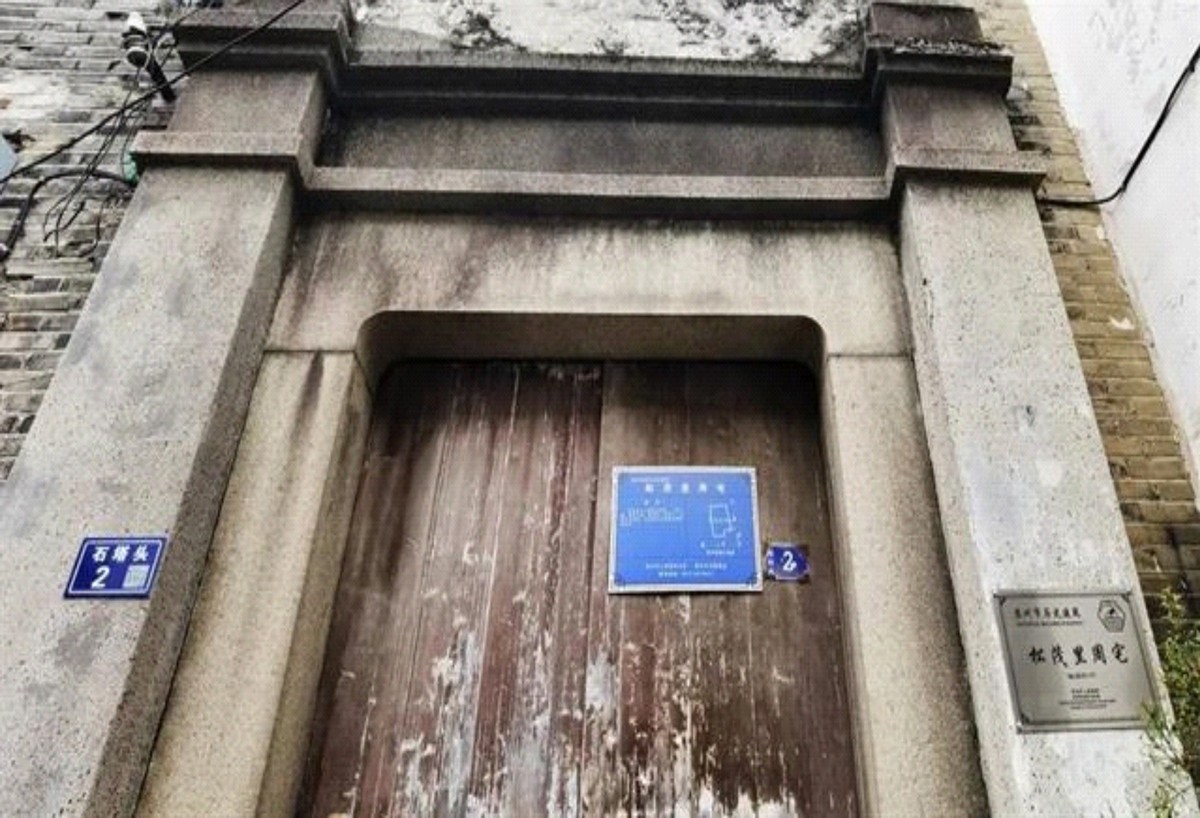The head of the stone pagoda, from the alley in the west to the Temple of the King of Zhou in the east, is only 49 meters long and 2.5 meters wide.
There is a stone tower in the alley. This stone pagoda is listed in the legendary Suzhou "Seven Pagodas, Eight Buildings and Nine Steamed Buns", which shows the long history of this alley. Thus, the alley follows the name of the tower.
There are two control buildings in Shitatou Lane, which is only 49 meters away, which is an important historical site of modern Suzhou and a representative building of the times.
The Zhou Zhijun family's private residence "Song MaoLi" (control building).

"Matsumori" Zhou House
Zhou Zhijun (1898~1990), a native of Dongzhi County, Chizhou City, was an outstanding emblem merchant and national capitalist in modern times.
His grandfather Zhou Fu (周馥), an official in Shandong, and a minister of Nanyang, participated in the establishment of Fudan Public School (the predecessor of Fudan University) and Anhui Public School; his father had twice served as the chief financial officer of the Beiyang government, was the founder of modern industry in the north, and was known as the "industrial giant of the northern country", and was called "Southern Zhangbei Zhou" with Zhang Sai.
Zhou Fu's descendants still inherit the glory of the family, and are talented in various fields, and they are national pillar-level talents.
During the War of Resistance Against Japanese Aggression, the Nationalist government formulated the "Measures for the Relocation of Factories in Coastal Provinces and Cities to the Interior", which began the journey of "Dunkirk of Chinese Industrial Circles". Zhou Zhijun demolished some of the mechanical parts of Qingdao Huaxin Spinning Factory and transported them to the Shanghai Concession to set up Xinhe Spinning Factory, Xinfu Printing and Dyeing Factory and Xinyi Machine Factory... Zhou's enterprises became the highlight of national industry during the War of Resistance Against Japan.
So far, the old factories of Zhou and other enterprises have been transformed into gorgeous art halls, which have become a remarkable scenery on the banks of the Suzhou River and a part of The Haipai culture. There are stages for fashion events, M50 buildings, studios and art galleries with different styles, art and creative parks, Fragrant Lidao Cafe and Half Degree Music...
Shanghai M50 Creative Park (former old factory building of Zhou's and other enterprises)
"Song maoli" Zhou House is located at No. 2 Stone Tower Head. One fall and two advances, two-story Republic of China building, green brick exterior wall, stone warehouse door, internal brick and wood structure. In the 1950s, the property rights of the house were changed to "public housing", which was occupied by multiple families, the architectural pattern was dismembered, and the entrance and exit passages were changed, resulting in the strange phenomenon that No. 2 of Shitatou and No. 47 and 48 of Shita Hengjie were all Zhou Houses.
Shitatou No. 4 "Suzhou Children's Library" (control building).
In April 1949, with the support of Song Qingling's China Children's Welfare Foundation and all walks of life, the Suzhou Children's Library was officially opened at No. 4 Shitatou. The museum houses more than 6,000 children's books. In August of the same year, the library sponsored the "Children's Newspaper", which was self-written and printed by young readers.
Former site of Suzhou Children's Library
Suzhou Children's Library, after liberation, moved to Kinmen Neiyichang Muxing, and later moved to Dacai Primary School Branch, in August 1950 was merged into the Municipal Library, as the Municipal Library Children's Reading Room.
The social significance of books is no longer prominent in today's era of digitalization and networking, but around the 1950s, before primary education was popularized, it was a great event to have a professional children's library in Suzhou.
The Suzhou Children's Library also has red significance, the library initiator and organizer Qian Junhua is an underground party member of the Communist Party of China in Suzhou, and the library was once an underground party activity place.
The original site of "Suzhou Children's Library" is a building in the late Qing Dynasty and the beginning of the Ming Dynasty, running north-south, two-entry and three-bay buildings, covering an area of 392 square meters and a construction area of 687 square meters.
The original sites of the Zhou Zhijun family's "Song maoli" and "Suzhou Children's Library" are still "seventy-two tenants". Moreover, the number of households is more and more diverse, and as the "room card room" has a property right attribute in disguise, the concept of each household's territory is getting stronger and stronger. These two historic buildings are suffering from a new round of erosion and reclamation...